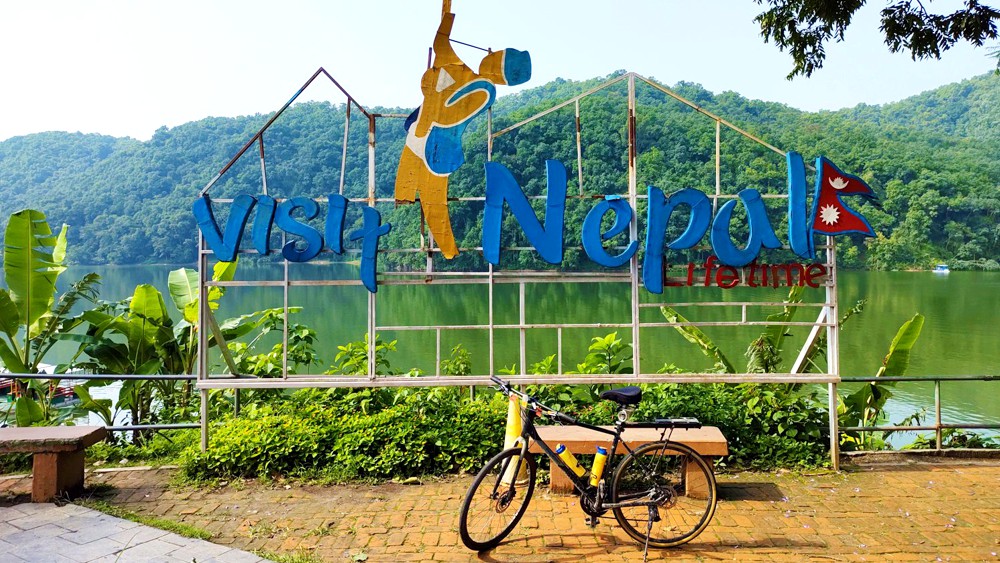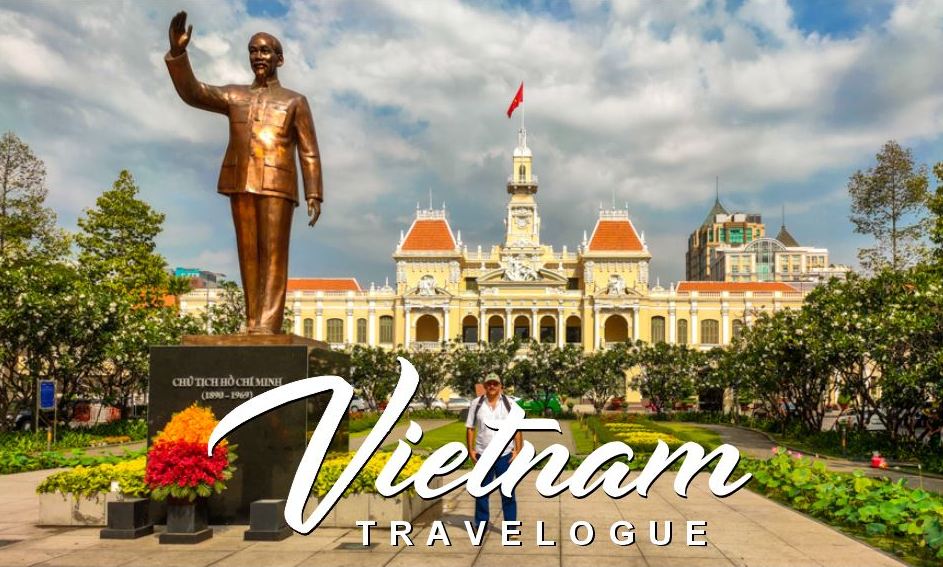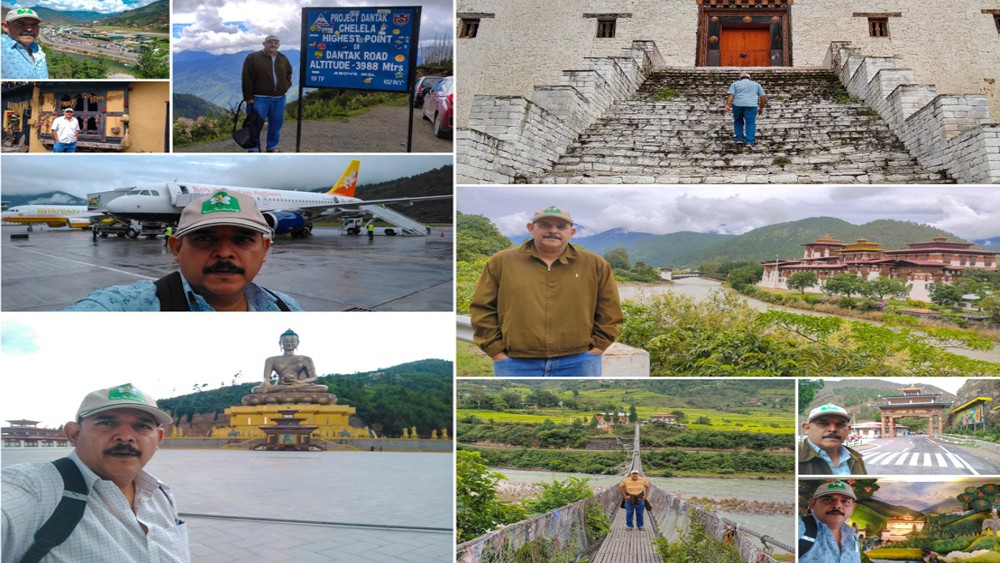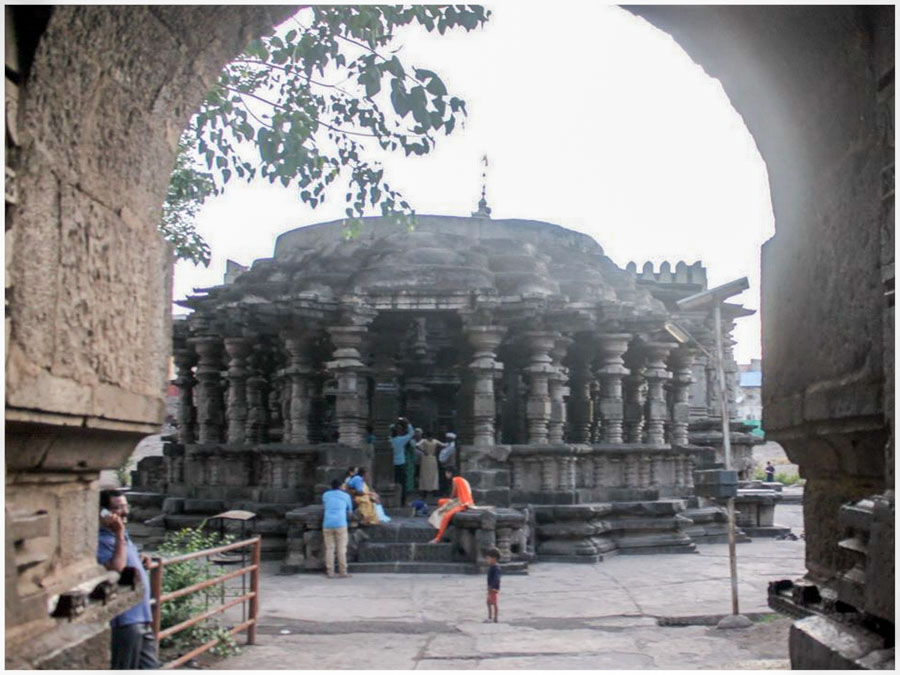
I have been going to Sangli for so many years as my sister is married there. But I had never heard of a 1500 year old temple near Sangli. It was only after the shooting sequence of a song in Katyaar kaaljaat ghusali was filmed there that people started speaking of this beautiful temple which is very near to Narsoba Vadi. And I have been to Narsoba Vadi thrice earlier. I decided to make a special trip to Sangli to see this temple. It was worth it.
I used GPS for driving to the temple and when I reached the destination I saw a compounded site with trees inside and a pavered parking space in the front. Thinking that this was the temple site I turned in the parking only to notice a board of a hospital near the compound gate. Confused I got out and asked a sugarcane juice vendor nearby for the directions the temple. He pointed to a wall with a small entry exactly on the opposite side. Nothing of the temple was visible from the road where I was standing. Neither there was any sign to indicate that a 1500 year fine old temple is here. The wall is a stone fortification. There is nagaarkhana too in the fortification. We entered through the ornated stone entrance and saw the temple which seemed to be a beautiful stone sculpture in totality.
The construction of the temple is believed to have started in the 7th Century by Chalukya King Pulkeshi. But as he was killed in a battle and as the area remained under warfare the construction probably was abandoned. Some of the engravings though marked as can be seen are unfinished. There are many Shilalekhs in the temple in Kannada but no time period is mentioned on them. There is one in Sanskrit in Devnagari script which states that the temple was renovated in 1204 by Raja Singhandev. He probably constructed the main Shikhar of the temple which looks completely out of sync; it is a botched up job.
The temple has three main halls. The first one is the swarga mandap which is roundish in shape. The mandap stands on 48 beautifully carved pillars placed in three circles. On the central 12 pillars stands the intricately carved ceiling with a unique 13ft diameter opening through which one can see the sky. Interestingly exactly below this opening, on the floor, a 13ft. dia flat polished stone slab is placed. On each of the 12 pillars, 12 deities are carved out riding on their respective vehicles. And their consorts are sitting behind each deity. But these are so precisely carved that when we see from the front only the main deity is seen. The consorts are seen only when viewed from the side. There are beautiful geometric patterns carved on the pillars.
The second hall is the sabhamandap. This is squarish with 60 columns placed again in three squares. The corner four columns of the innermost square are bigger and have Kirtimukh carved at the top on each side. Kirtimukh literally means glorious face. It is a face of swallowing fierce monster with huge fangs. These are common in iconology of Hindu temples and Buddhist architecture. The unique feature of the 16 kirtimukhs at Kopeshwar temple is that each is engraved in a unique way. Various Fruits and flowers, Birds and animals are engraved beautifully . Interestingly there are story sequences engraved on pillars here. Along with Ramaayan and Mahabharat stories, talkative Tortoise being flown by two swans, monkey riding on a crocodile are also engraved.
The third main hall is the garbhagruha. As you enter, the first thing that strikes you is that there are two lingas and that they are not facing the visitors entering from the west but are facing to the north. This is probably the only temple which houses side by side Lord Shiva as well as Lord Vishnu in Linga form. Second interesting thing is that there are swapnasundaris all along the wall here. The mythology behind all this was explained to us in details by our guide Mr. Shashank Chothe (mob. 8888005889; he said he worked in Goa for some years and requested us to pass on his number to those interested in visiting the temple. Thanks to Mr. Chothe, we saw the temple in a completely different perspective. The minute details narrated by him made our trip much more enjoyable). He pointed out to us that there is no Nandi in front of the Shiva in this temple. The reason for this, the name Kopeshwar, lord facing north, presence of Vishnu and Swapnasundaries in the garbhagruha all seem to be perfectly logical in the mythological narrative. I would not divulge this as I want you to visit the temple and hear it yourself.
The most interesting feature of this temple is that at the base of the temple from outside, there is a row of big elephants on all the four walls of the temple, as if they are bearing the full weight of the temple. In this Gajapatta there are total 92 elephants and a big surprise is that each one is different from the other. Each one has a different deity riding on it and the adornment and jewelry intricately carved on each is different. But unfortunately trunks of many are cut off by barbaric invaders others are seen holding flowers and fruits.
The area above the Gajpatta consists of many diverse sculptures. Beautiful well adorned women adorn the outside of the walls. There are women with serpents or vishkanyaas , women with musical instruments, women who seem to be writing, Dancers in different poses, women playing holi and so on. There are hundreds of sculptures inside and outside the temple but there is not a single repetition. The variety of fashions depicted is amazing. Different hairstyles, different jewelry designs of which some are still in vogue, different foot wears including high heels etc. and different poses – it is surely mind boggling. There are sculptures of foreigners too on the outside wall as can be surmised from their dress and beard.
Unfortunately camera shooting is not allowed inside the temple. I clicked a few and then I saw the board. So most of my photographs are of the outside of the temple.
I was happy that I decided to see the temple but was sad to see the mindless destruction and ravaging of a fascinating piece of art and also by the apathy of the government and the populace as a whole for not giving due importance to this magnificent work.
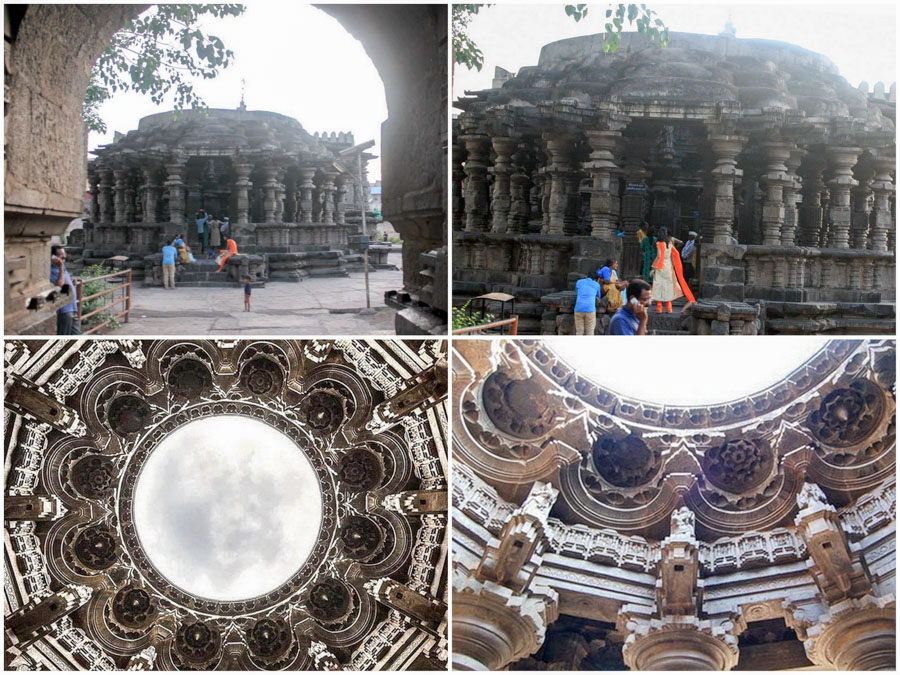
TL: The temple as seen from the Nagaarkhaana arc
TR: Swarga Mandap with a 13ft. round opening to the sky
BL: Intricately carved ceiling of the Swarga Mandap with circular opening
BR: You can see the deities on the three pedestals jutting out from the top of pillars
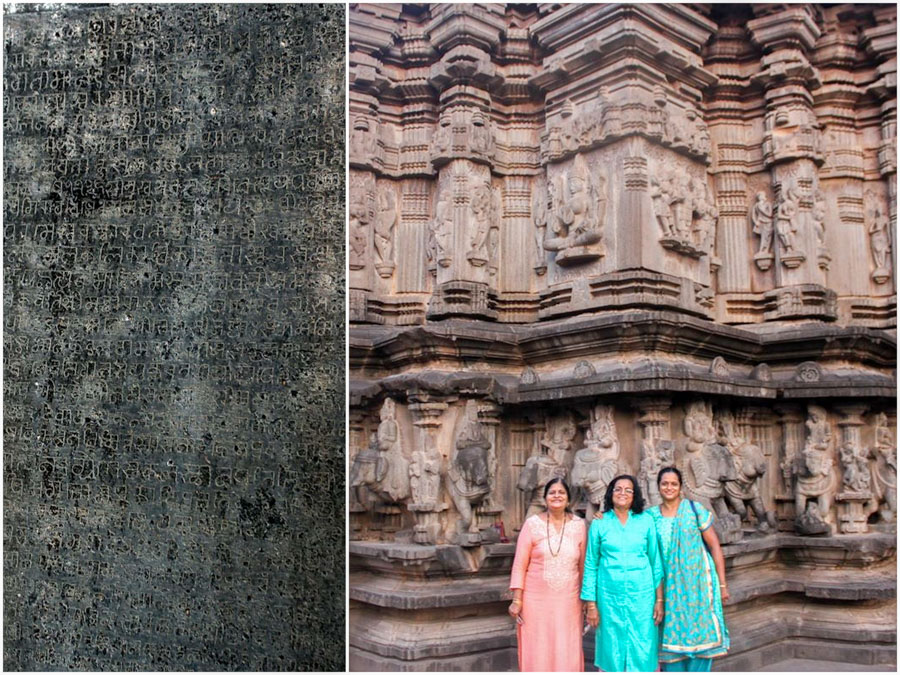
L: The Sanskrit Shialalekh in Devnaagari script which states that the temple was renovated by Samrat Singhandev in 1214.

See the Gajapatti the first bottom layer made of elephant sculptures. The trunks of elephants are chopped of by on orders of Aurangjeb.
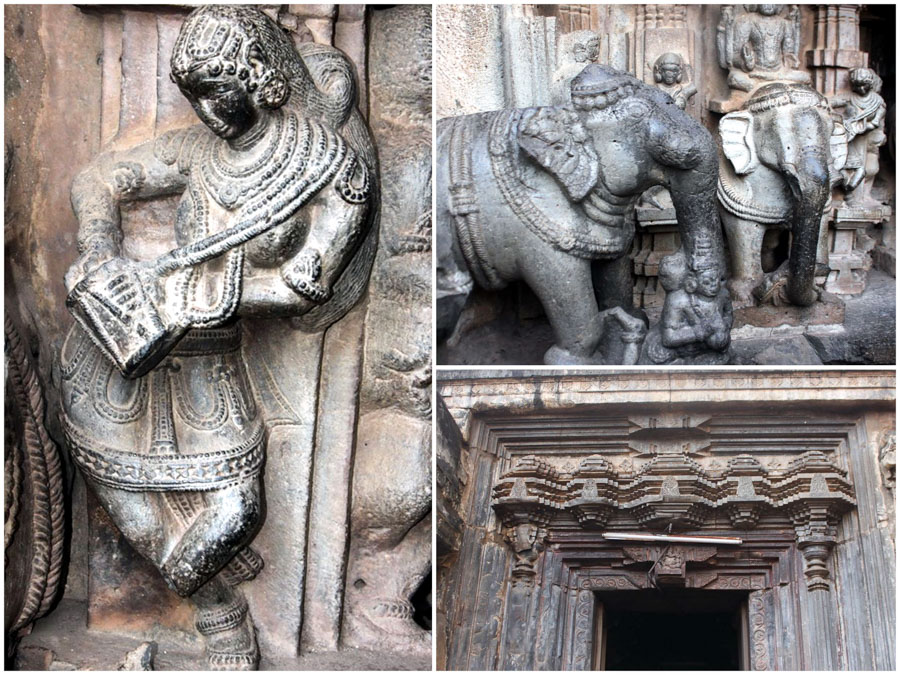
TL: These sculptures have trunk intact. See the difference in the design of ornaments on the elephants. Each elephant is shown again holding different things in the trunk.
TR: The damru girl with detailed intricate carving. Importantly no two beauties have same hairstyle.
BR: The beautifully carved stone door frame and shabbily placed tubelight with electric pipe

There are various sculptures in Naripatta the layer above the Gajapatta.
L: Note the incredible waist twist and the Mona lisa type smile on the face.
C: The high heel beauty. Note the earrings, hairstyle and design of the high heel footwear again 1500 years ago.
R: What a hair style!
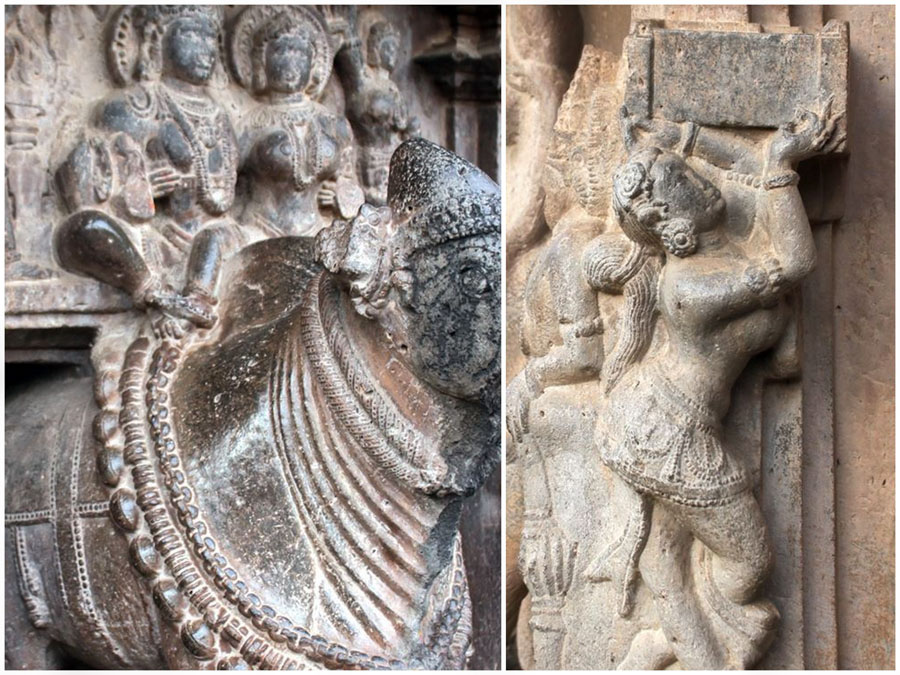
L: Shiv-Parvati riding on a Nandi. See the details of all neck adornments of Nandi particularly the interlocking chain.
R: This stylish lady seems to be a construction site worker imagine 1500 years ago.
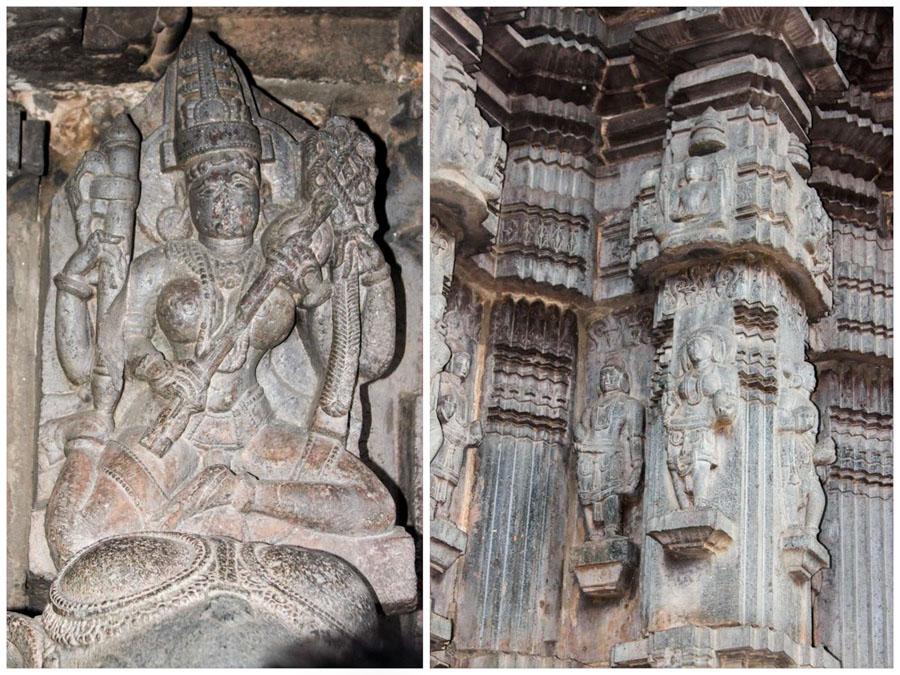
L: Imagine the load of work involved in such detailed engraving in hundreds of sculptures that adorn the outer wall.
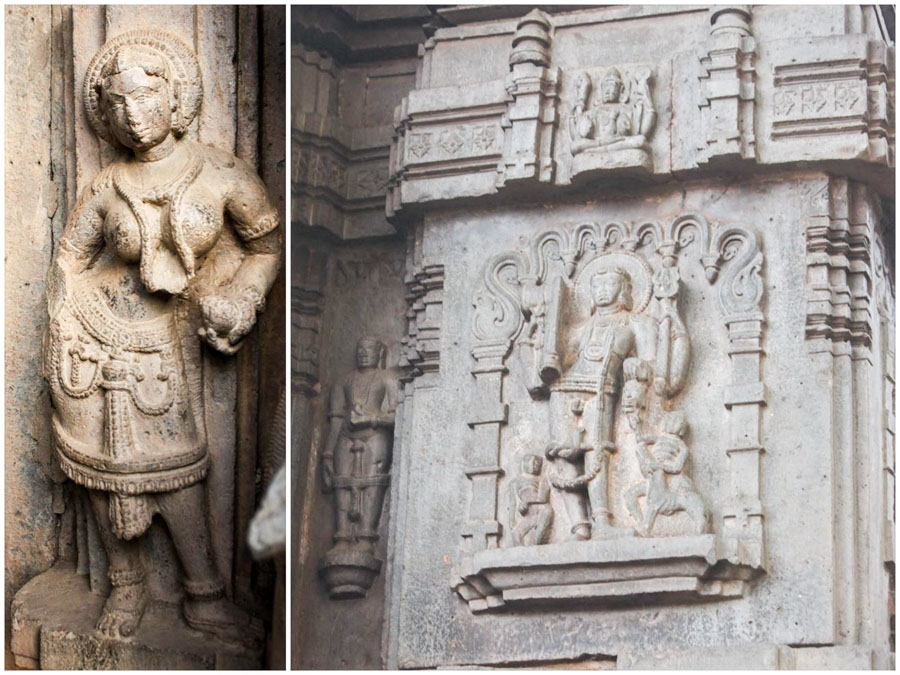
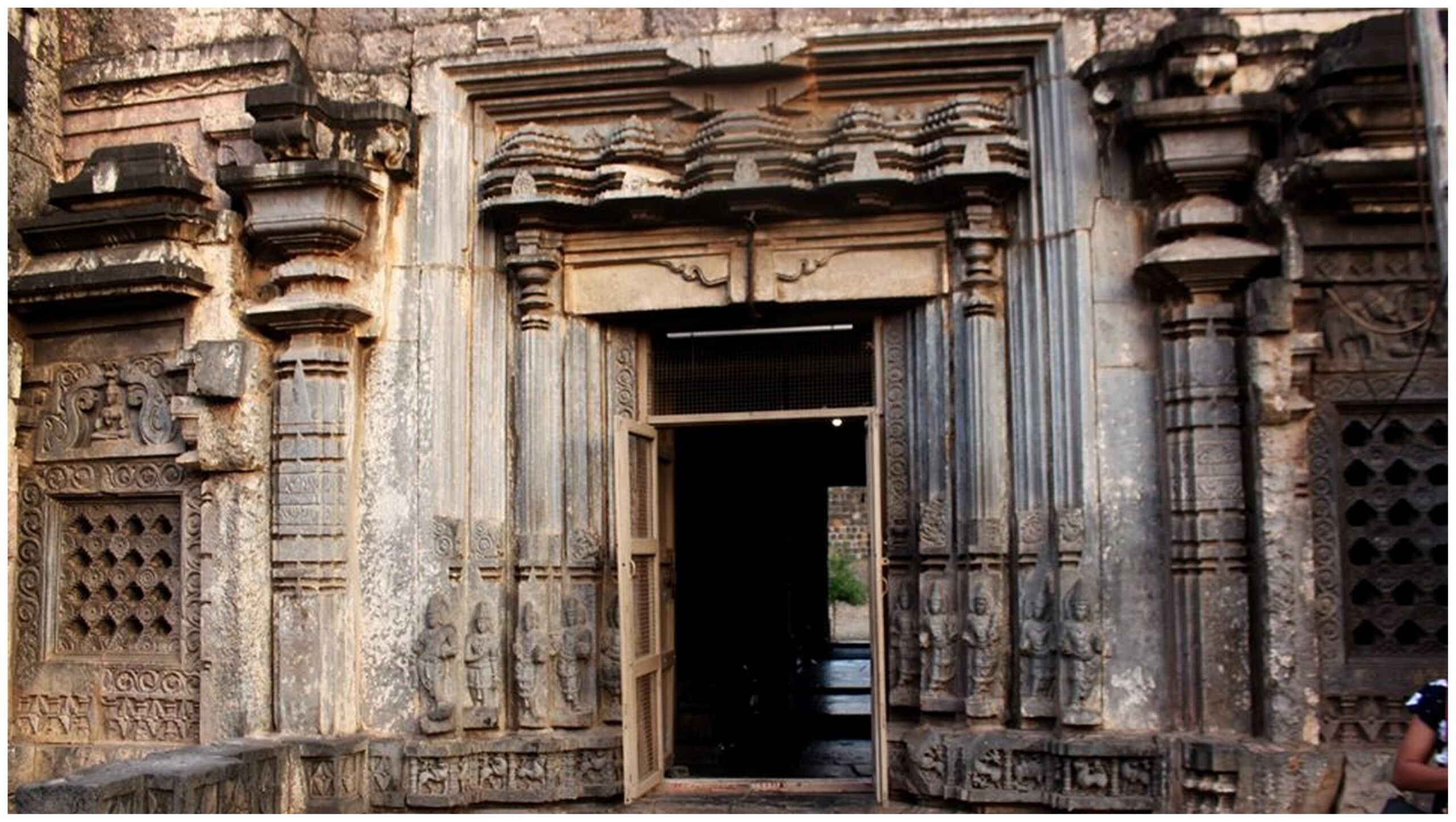
This is the south side door which goes to the sabha mandap. It is seen that small structures were planned on the south as well as north side of the sabhamandap and these were not constructed.
See the two window screens on the two sides. There are six such screens each with beautiful panels on the top.
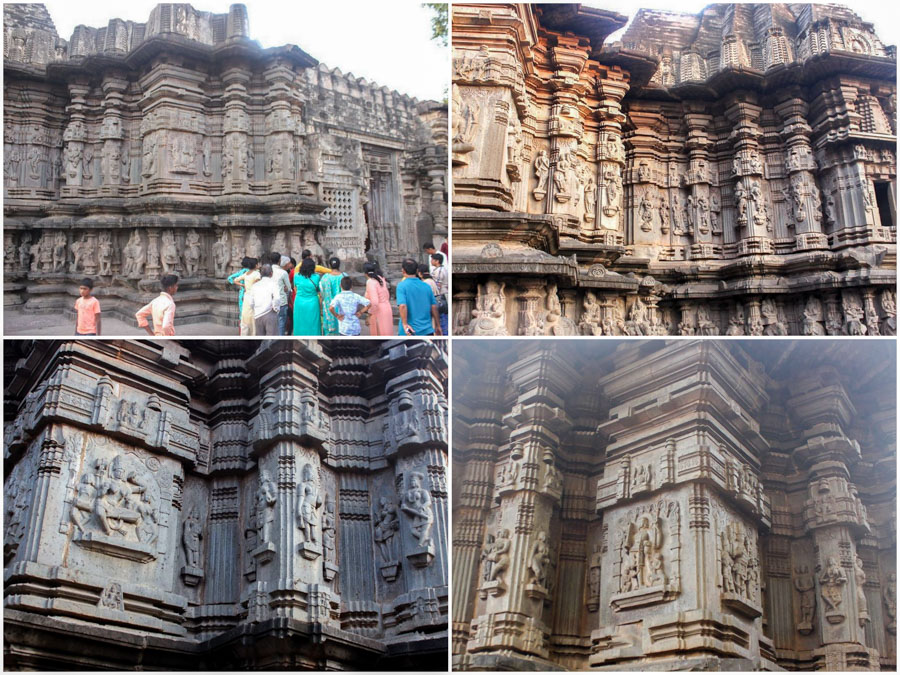
The variety of sculptures is amazing. There is a Buddha and a Mahaveer sculpture too.
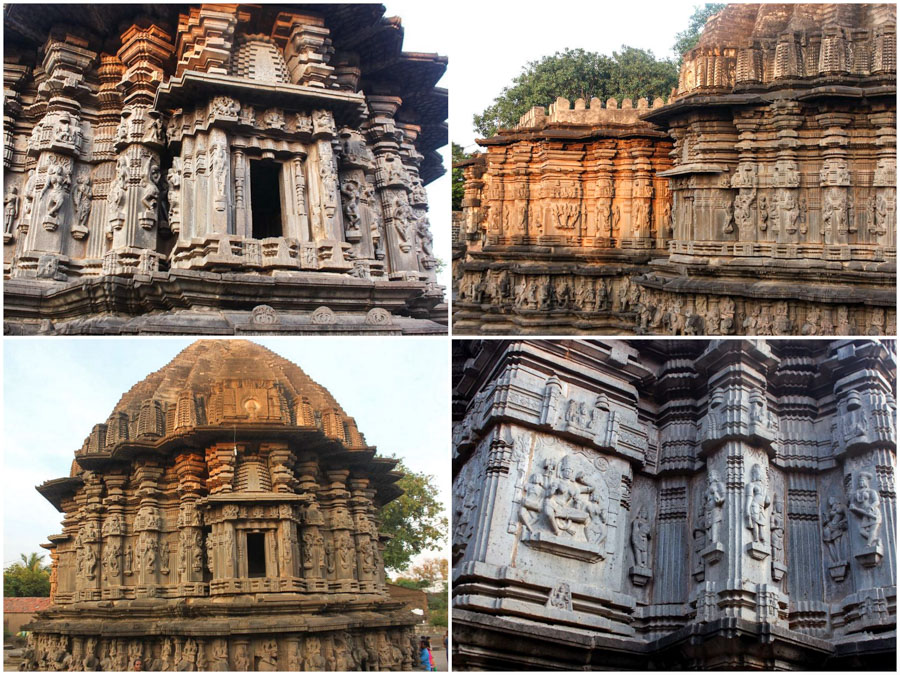
TR: The gajapatta at the bottom, the narpatta at the central and may be Shikharpatta at the base of the Shikhar. The outside sculptures seem to be worn out but these are made of the same black basalt stone from which inside sculptures are made. The sculptures inside still have magnificent gloss and are black.
BL: The beautiful East side of the temple.
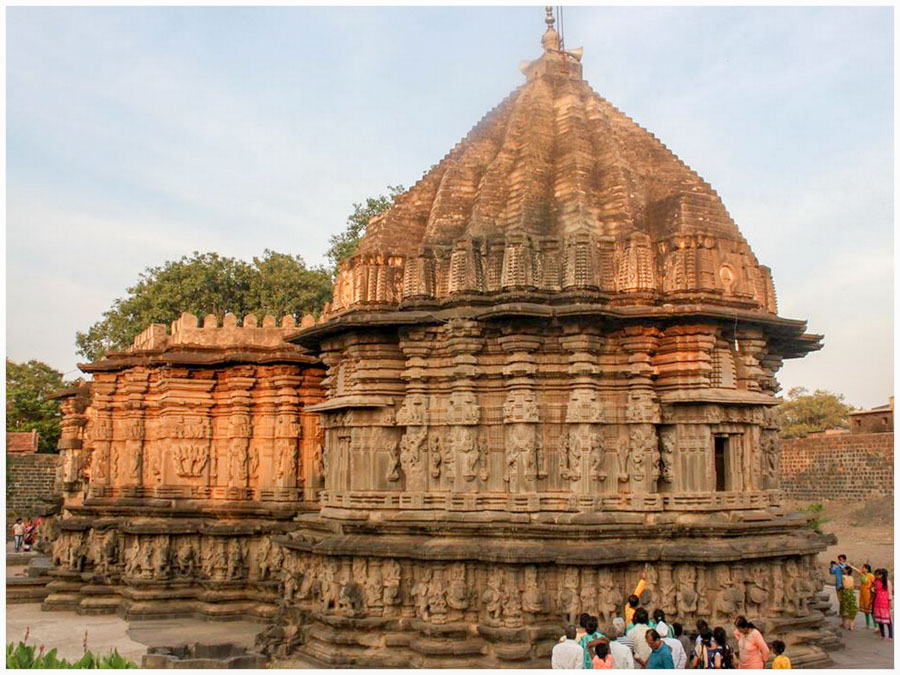
The botched up Shikhar which must have been done during renovation in 1214.
Vinay Borker
https://www.facebook.com/vinay.borker/posts/2408482122508080
This presentation was shared on the Let’s Travel whatsapp group in August 2020.
Let’s Travel is a whatsapp group created by travel enthusiasts to share their travel stories and memories.
Its an open group, to join click the link: https://chat.whatsapp.com/ITeMEV5DQkr8SiPP7Wak5R
#travelstories #whatsappstories #letstravel

